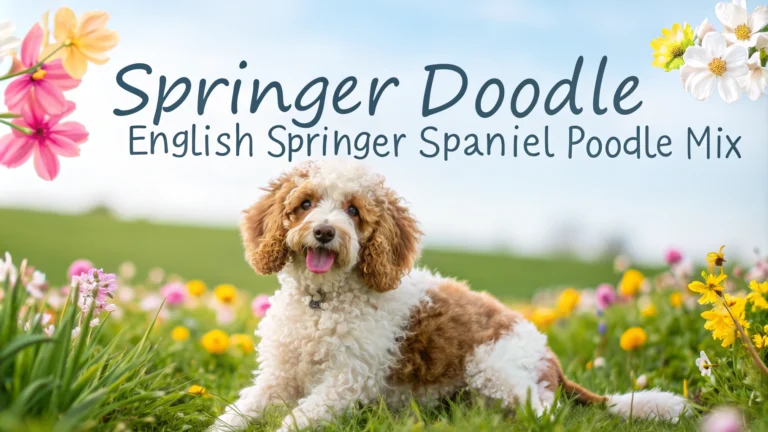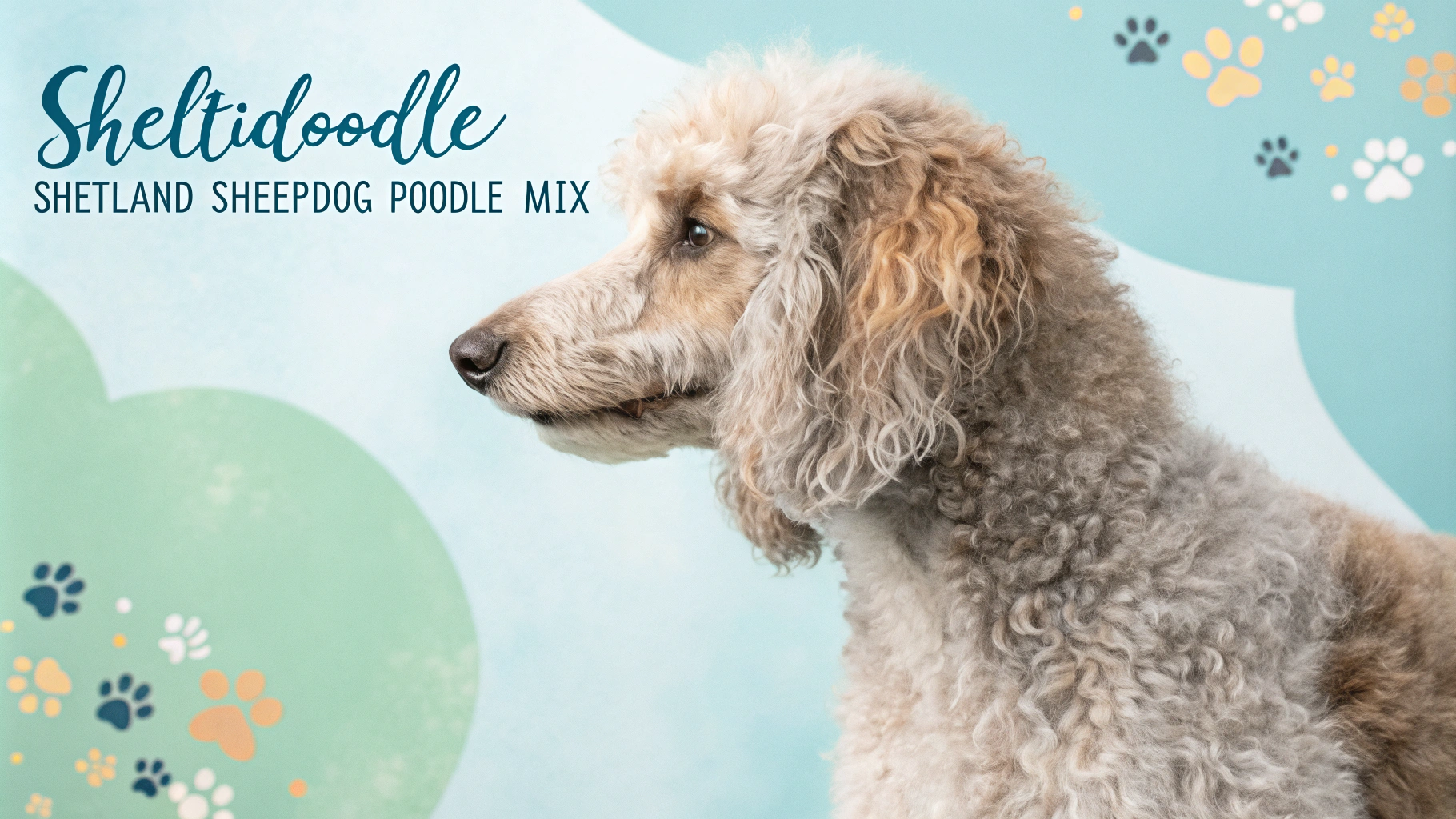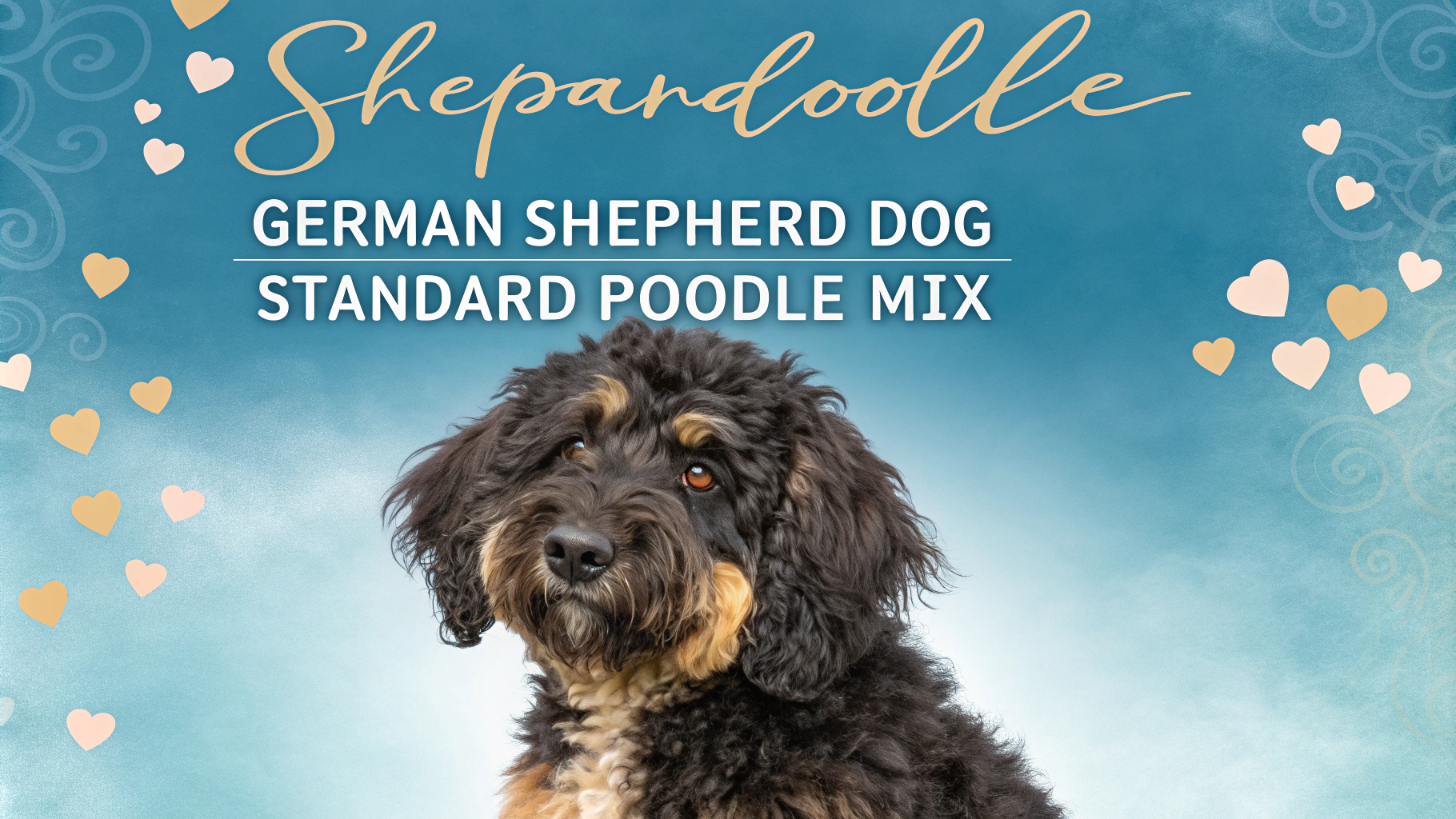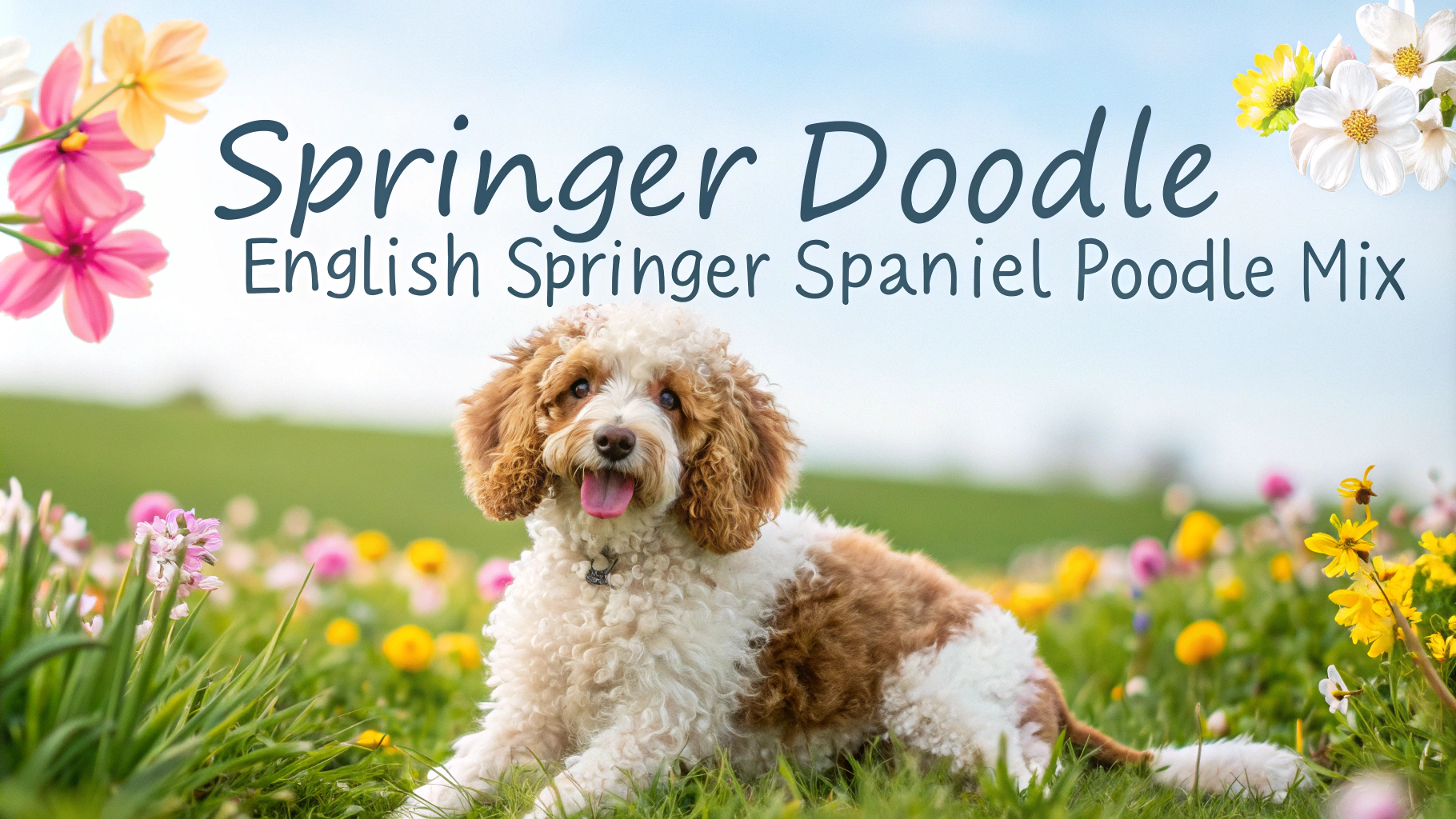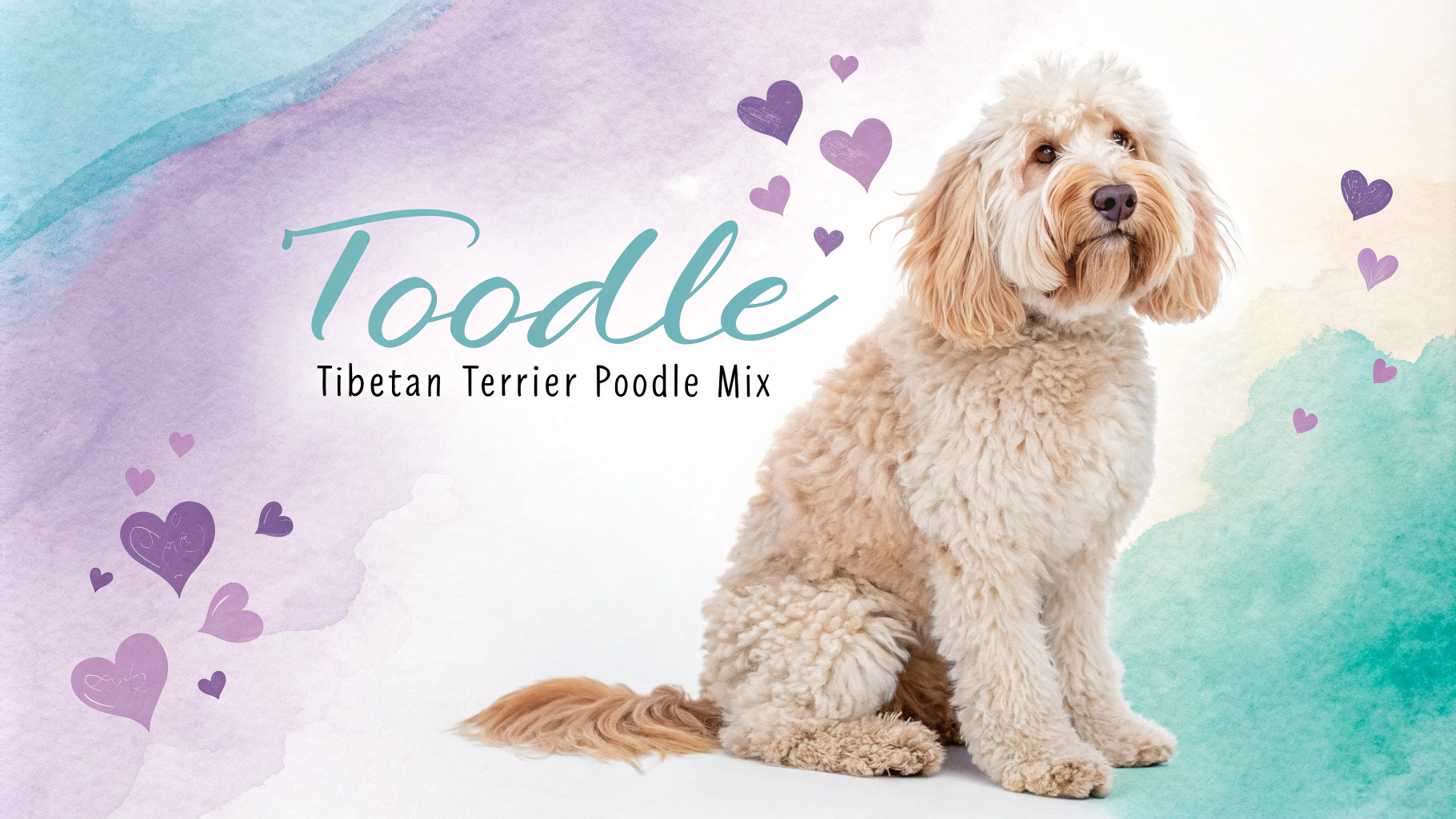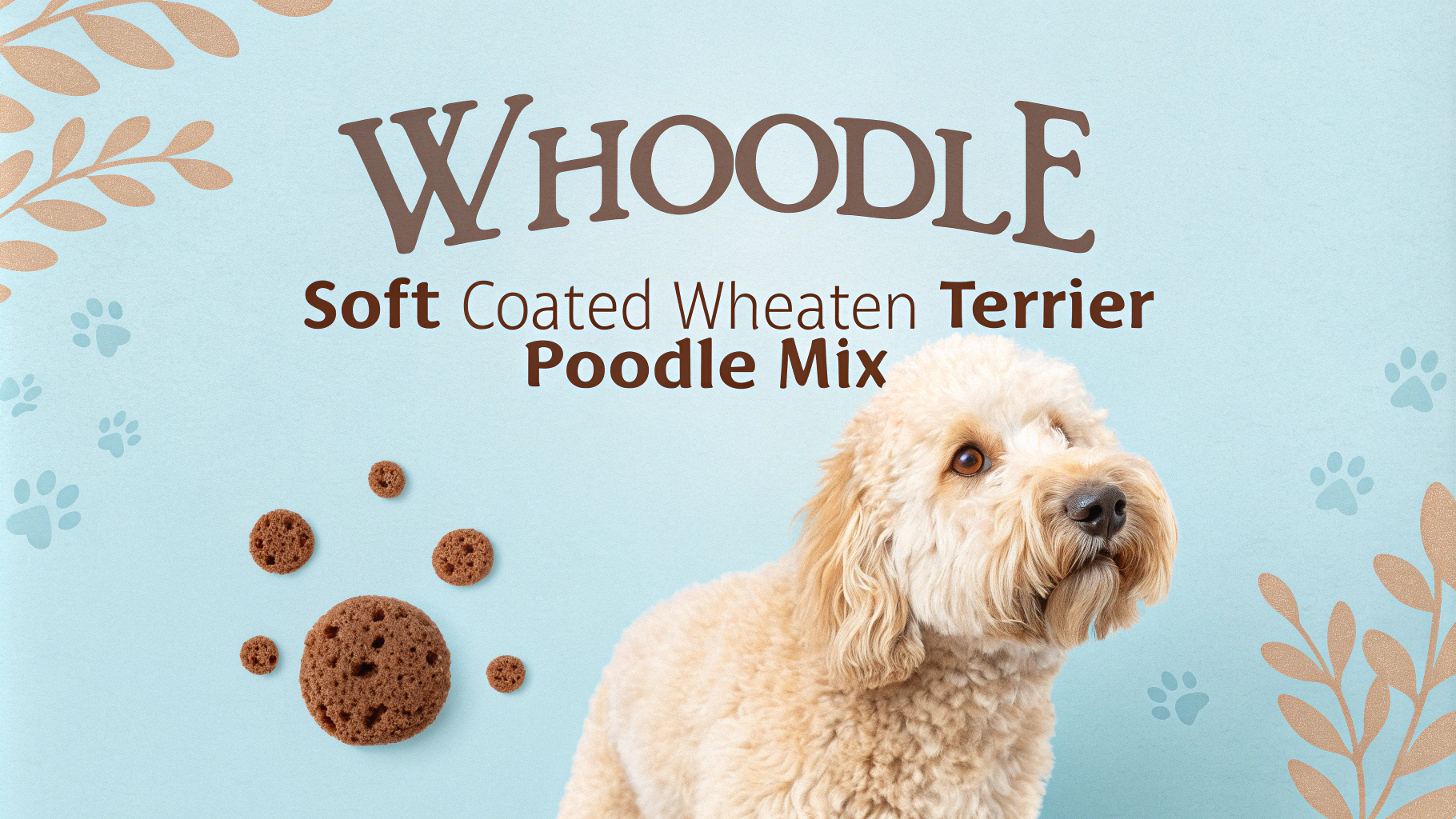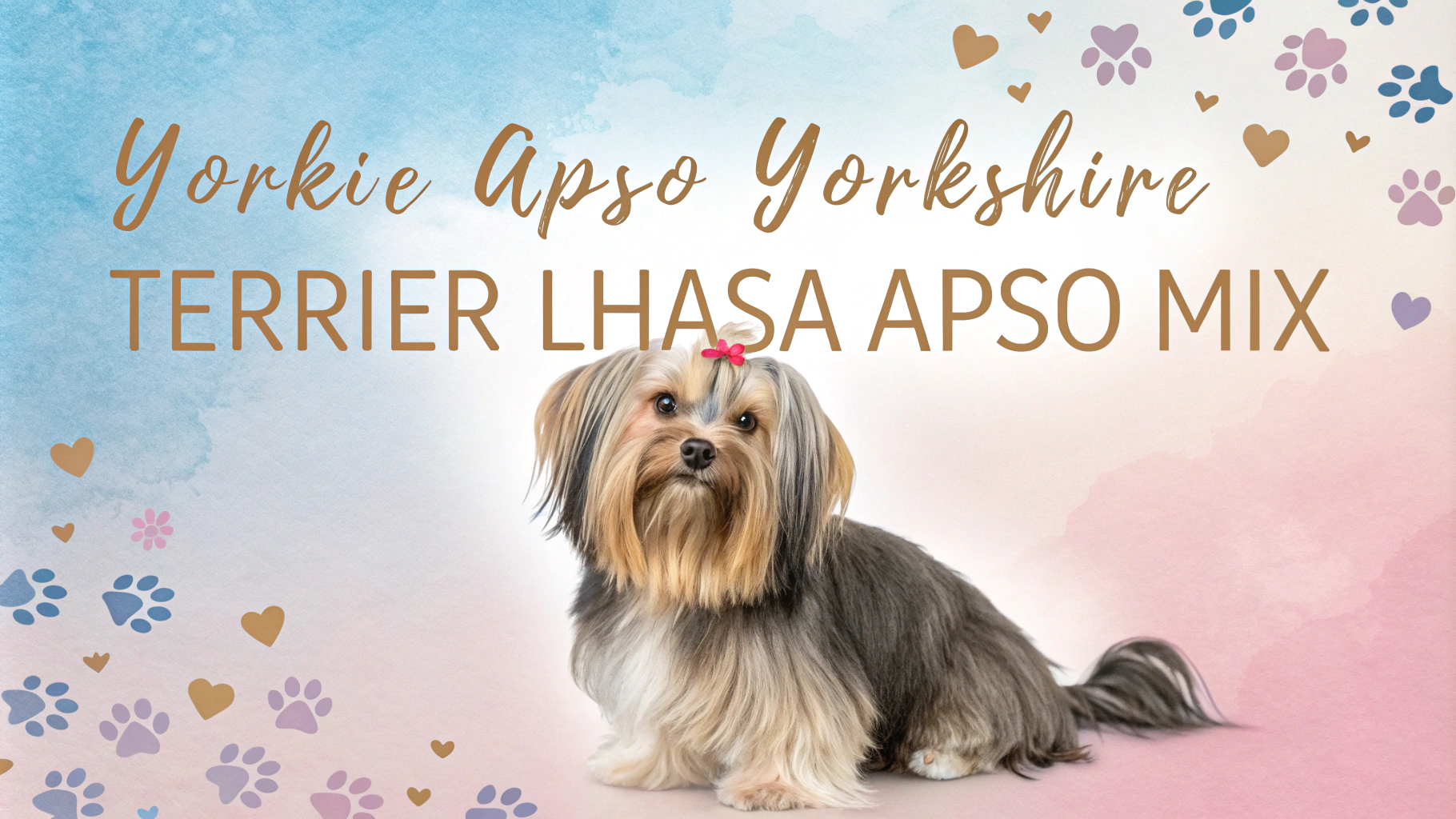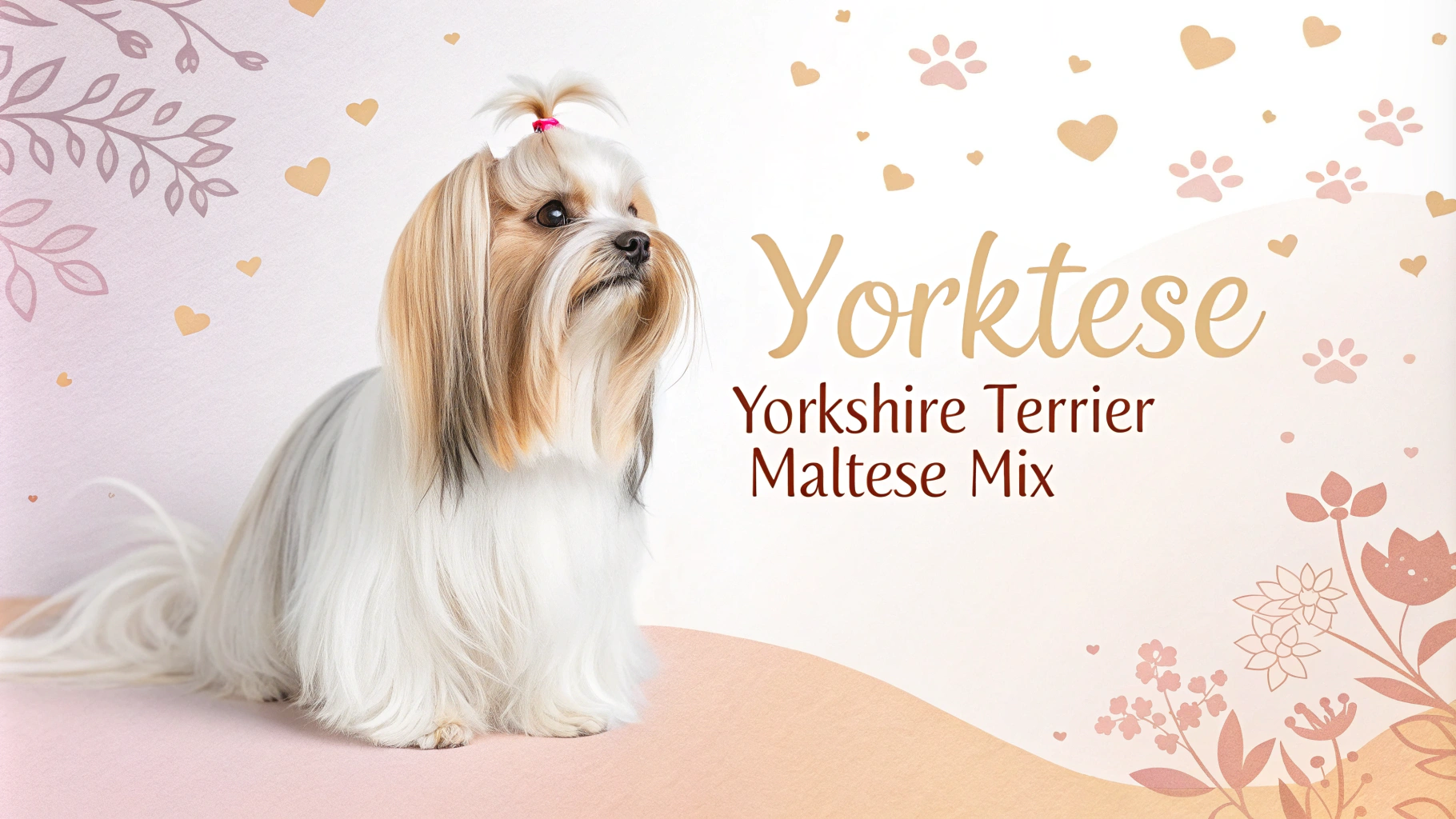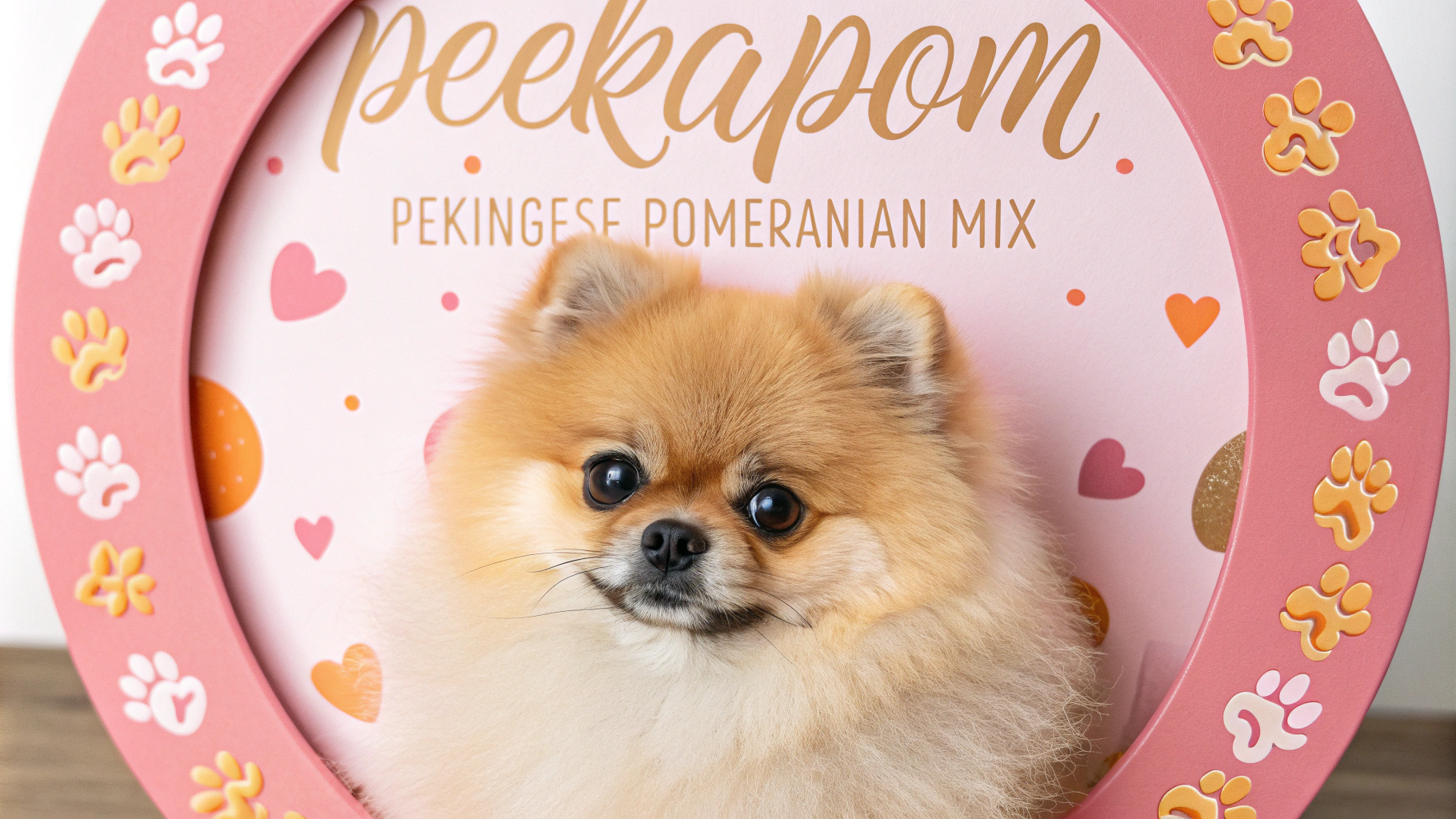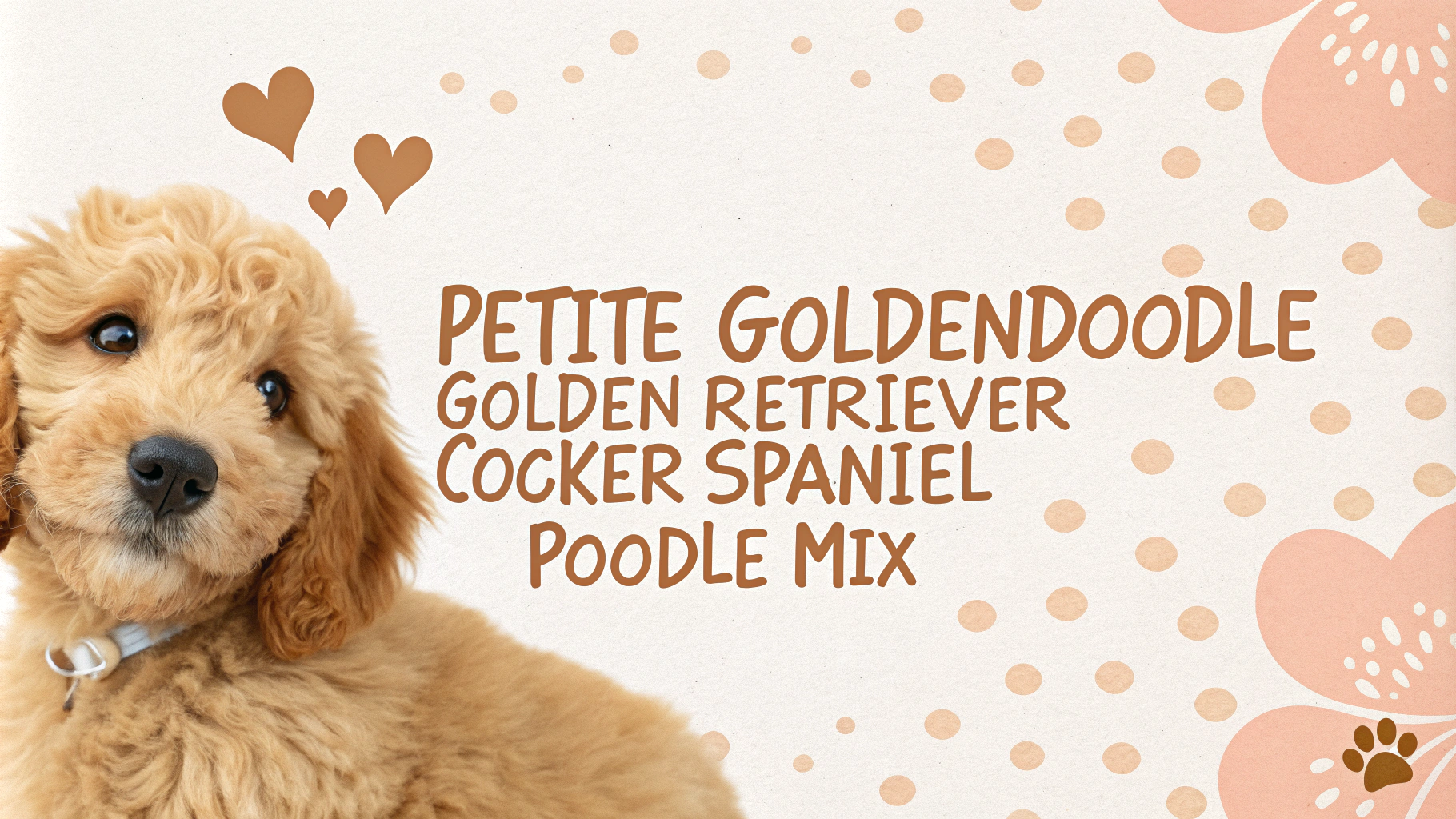The Springerdoodle is a designer dog breed that combines the English Springer Spaniel and the Poodle. This mixed breed inherits traits from both parent breeds, resulting in an intelligent, energetic, and affectionate companion. Springerdoodles are known for their friendly nature and adaptability, making them suitable for various living situations and family types. These dogs often have a low-shedding coat, which can be appealing to allergy sufferers, though individual results may vary.
Key Facts
- Size: Medium to large (40-60 pounds)
- Life expectancy: 10-15 years
- Coat: Wavy to curly, low-shedding
- Colors: Various, including black, white, brown, and parti-colored
- Temperament: Friendly, intelligent, and energetic
- Exercise needs: High
- Grooming: Moderate to high maintenance
Character Traits
Springerdoodles are known for their friendly and outgoing personalities, inheriting the best traits from both parent breeds. They are typically intelligent, eager to please, and highly trainable, making them excellent family companions. These dogs are often energetic and playful, requiring regular exercise and mental stimulation. Springerdoodles tend to be social and get along well with children and other pets when properly socialized. Their affectionate nature makes them devoted to their families, and they often form strong bonds with their owners. While generally even-tempered, they may inherit some hunting instincts from their Springer Spaniel parent, which can manifest as a strong prey drive.
History & Origins
The Springerdoodle is a relatively new designer dog breed, likely originating in the late 20th or early 21st century as part of the growing trend of “doodle” crossbreeds. The exact origins of the Springerdoodle are not well-documented, as is often the case with designer breeds. The mix was likely created to combine the intelligence and low-shedding coat of the Poodle with the friendly, energetic nature of the English Springer Spaniel. While not recognized by major kennel clubs as a purebred, Springerdoodles have gained popularity among dog enthusiasts seeking a smart, affectionate, and potentially hypoallergenic companion. As with many designer breeds, the characteristics of individual Springerdoodles can vary depending on which traits are inherited from each parent breed.
Health Concerns
Springerdoodles generally inherit good health from both parent breeds, but they may be prone to certain conditions. Common health issues include:
- Hip dysplasia: An inherited condition affecting the hip joint
- Progressive Retinal Atrophy (PRA): A degenerative eye disorder that can lead to blindness
- Ear infections: Due to their floppy ears, which can trap moisture
- Addison’s disease: A hormonal disorder affecting the adrenal glands
- Bloat: A potentially life-threatening condition where the stomach fills with gas and twists
Regular veterinary check-ups, a balanced diet, and proper exercise can help mitigate some of these risks. Responsible breeding practices can also reduce the likelihood of inherited conditions. It’s important to obtain health clearances for both parent breeds when acquiring a Springerdoodle puppy.
Exercise Needs
Springerdoodles are energetic dogs that require a significant amount of daily exercise to maintain their physical and mental well-being. They typically need:
- 60-90 minutes of exercise daily: This can include walks, runs, or playtime in a securely fenced area
- Mental stimulation: Puzzle toys, training sessions, and interactive games are essential
- Swimming: Many Springerdoodles inherit a love of water from both parent breeds
- Fetch and retrieving games: These activities cater to their natural instincts
Without adequate exercise, Springerdoodles may develop destructive behaviors or become anxious. Their exercise routine should be tailored to their age, health status, and individual energy levels. Puppies and senior dogs may require less intense exercise, while adult Springerdoodles often thrive with more vigorous activities.
Space Requirements
Springerdoodles are medium-sized dogs with moderate space requirements. They can adapt to various living situations, but thrive best in environments that provide ample room for exercise and play. Ideal living conditions include:
- Houses with yards: A fenced outdoor area allows for safe exploration and play
- Apartments: Possible with sufficient daily exercise and mental stimulation
- Indoor space: Enough room to move freely and stretch out comfortably
- Access to outdoor areas: Regular trips to parks or open spaces for exercise
While Springerdoodles can adjust to apartment living, they generally do better in homes with more space. Regardless of the living situation, they need a dedicated area for rest and relaxation. It’s crucial to provide them with a comfortable bed and space for their toys and belongings.
Nutrition & Feeding
A balanced diet is crucial for maintaining the health and vitality of Springerdoodles. Their nutritional needs may vary based on age, size, activity level, and overall health. Key considerations for feeding Springerdoodles include:
- High-quality dog food: Choose a brand that meets AAFCO standards for complete and balanced nutrition
- Portion control: Follow feeding guidelines based on weight and activity level to prevent obesity
- Meal frequency: Adult Springerdoodles typically do well with two meals per day
- Fresh water: Always provide access to clean, fresh water
- Treats: Use in moderation, not exceeding 10% of daily caloric intake
Consult with a veterinarian to determine the best diet plan for your Springerdoodle, as individual needs may vary. Some Springerdoodles may benefit from breed-specific formulas or diets tailored to their size and energy requirements. Regular monitoring of weight and body condition is important to adjust feeding as needed throughout their life stages.
Grooming Tips
Springerdoodles typically require regular grooming to maintain their coat and overall health. Their coat can vary depending on which parent breed they take after more, but it generally needs frequent brushing to prevent matting and tangling. Brush your Springerdoodle at least 2-3 times a week, using a slicker brush and metal comb to remove any loose hair and prevent knots. Regular grooming sessions also provide an opportunity to check for any skin issues or abnormalities.
Bathing should be done every 4-6 weeks or as needed, using a mild dog shampoo to avoid drying out their skin. Pay special attention to their ears, as they can be prone to infections due to their floppy nature. Clean the ears regularly with a veterinarian-approved ear cleaner. Trim their nails every 2-3 weeks or as needed, and brush their teeth several times a week to maintain good oral hygiene.
Professional grooming every 6-8 weeks can help maintain their coat in optimal condition, especially if you prefer a specific style or cut. During shedding seasons, which may be minimal due to their Poodle heritage, increase brushing frequency to help remove loose fur and reduce shedding around the house.
Training Approach
Springerdoodles are generally intelligent and eager to please, making them relatively easy to train. They inherit the Poodle’s high intelligence and the English Springer Spaniel’s willingness to work, resulting in a breed that responds well to positive reinforcement techniques. Start training early and be consistent to establish good habits and prevent any potential behavioral issues.
Use reward-based training methods, incorporating treats, praise, and play as motivators. Springerdoodles often excel in obedience training and can learn a wide variety of commands and tricks. Socialization is crucial from a young age to ensure they grow into well-adjusted adults. Expose them to various people, animals, and environments to build their confidence and reduce anxiety.
These dogs may have a strong prey drive inherited from their Springer Spaniel parent, so early recall training is essential. Focus on mental stimulation as well as physical exercise in their training regimen. Puzzle toys, agility training, and scent work can help keep their active minds engaged. Be patient and persistent in your training approach, as Springerdoodles may sometimes exhibit a stubborn streak. With consistent, positive training, they can become well-behaved and obedient companions.
